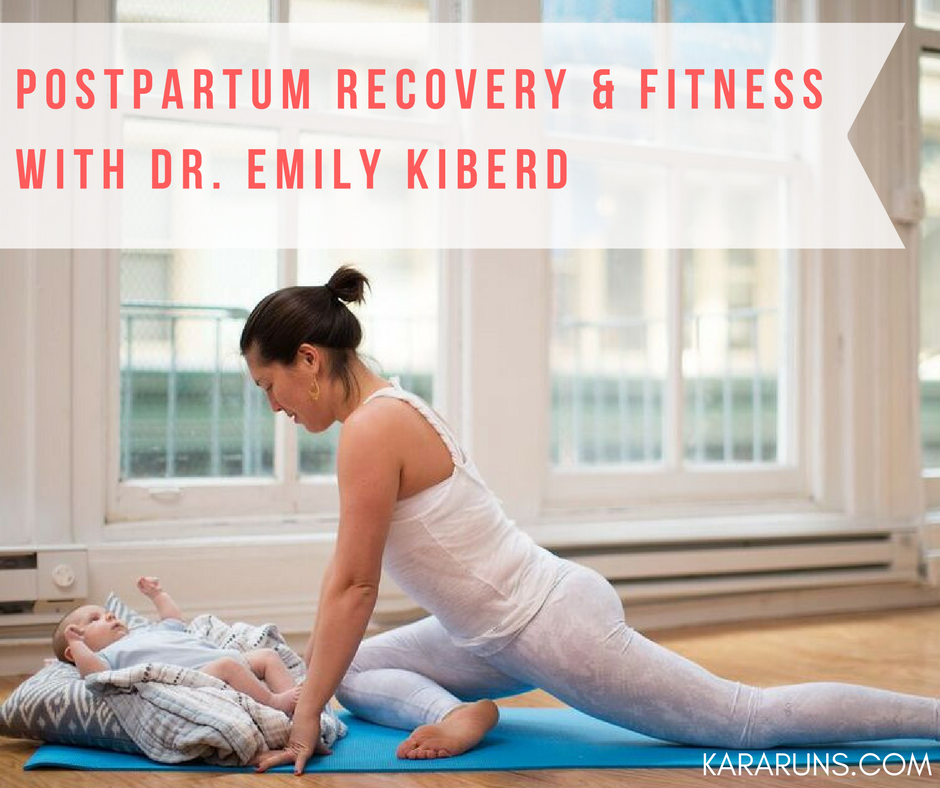I’m 35 weeks pregnant. (For those of you who don’t know, like I never did, you’re generally pregnant for 40 weeks. AKA I’m about 8 months along.)
I know, WHAT?! WHEN DID THIS HAPPEN. I’m already excited about returning to an exercise routine someday and having the ability to train for something.
Before you tell me how difficult and different everything is going to be, please save yourself from the wrath of my hormones and just let it go. I understand. I can imagine. I’m working on staying positive over here.
ANYWHOODLES, I’ve been researching tips on postpartum recovery and returning to exercise and movement in general. Since I’ve been very limited in my workouts, I feel as though I’ll be starting from absolute zero whenever I’m cleared to exercise again. Not only is life going to be very different, but I’m sure my body will feel totally different for awhile (forever?!) too.
Dr. Emily Kiberd is a chiropractor and owner of Urban Wellness Clinic in midtown Manhattan. Her mission is to optimize every patient’s health in order to empower them to move smarter, stronger, and pain free, and she does a lot of work helping runners prevent injury, learn how to recover post-training, and create mind-body balance. (Running the NYC Marathon this year? Here are her tips for preparing for race day and recovering post-race!)
This is NOT a sponsored post – I was just excited to be able to ask a professional some questions about postpartum recovery and returning to exercise…instead of incessantly googling and terrifying myself with what I learn in the process. Here’s what she had to say!

I recently read a study about how breastfeeding plays a large part in how your body responds to exercise, for example, having a higher risk of stress fractures. What should women who recently gave birth remember as they get back into exercise?
- Breastfeeding will keep your hormones at a level such that you are more hypermobile in your joints (putting you at risk for injury). I recommend slow eccentric load exercises with a belly brace.
- Listen to your body.
- I like body weight exercises like lunges, step ups, elevated push ups, and TRX exercises at first to start easy on the body.
- Do not do any moves that may cause Diastasis Recti, like forward folding/flexion at the hips or sit ups.
- Pelvic floor therapy with a pelvis floor specialist should be done by every women that has a baby. It should be the norm after having a baby.
More from her blog: Tips For Postpartum Recovery
Can you recommend some moves to do at home to aid in rehabilitating your body post-pregnancy and preparing to get back into exercise?
We like to rehab people after giving birth the same way we learned how to move when we were babies:
Crocodile breathing, face down, getting 360 expansion of the abdominal wall
Supine dead bug core exercise from 6 months on:
Side-laying oblique exercise:
Modified birddog:
Eventually we teach people our “essential 7”!
Do you have any recommendations for women who recently gave birth or are pregnant and feel like they benefit from the endorphins they get from exercise but are unable to exercise at the level they’re used to? How do we get better mind/body balance?
- Lots of skin-to-skin with your baby. It releases oxytocin which helps decrease anxiety, postpartum depression, and promotes attachment.
- An infrared sauna can help you get your release of endorphins.
- Cryotherapy can help if you’re not breastfeeding.
What are 2-3 tips that every women coming back from injury and/or pregnancy should know to prevent future injury?
- Find your abdominal brace. As women, we’ve been culturally trained to “suck in” and “skinny up the waistline” especially as we try to get our bodies back after giving birth. This can actually lead to pelvic floor dysfunction, a weak core, and poor breathing habits. I recommend NOT forcefully pulling your abdominal in unless you want your organs to prolapse into your vagina. Sucking in the belly creates a downward piston effect on your organs and pushes them into your pelvic floor.
- Learn to belly breathe, also known as a diaphragmatic breath with 360 abdominal expansion. I highly recommend not holding your breath – it compromises a structure down the front of your six-pack called the linea alba. This is a strong connective tissue holding the recti abdominal muscles (aka your six-pack) together and negatively affects the pelvic floor muscles. This can lead to diastasis recti or separation of the muscles.
Can you give us an example of “bio-hacking” when it comes to marathon training in general?
Runners should always get their baseline blood work checked at the beginning and the height of training to check for overtraining or a lead-up to adrenal fatigue.
Some other helpful posts from Dr. Kiberd:
10 Things They Don’t Tell You About Life After Creating Life
Vitamin D and Postpartum Depression
New moms: What have been your biggest challenges in returning to exercise after pregnancy?